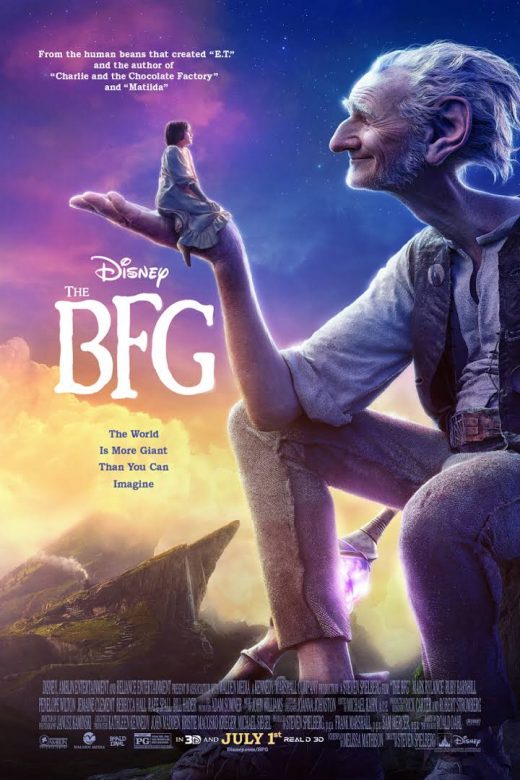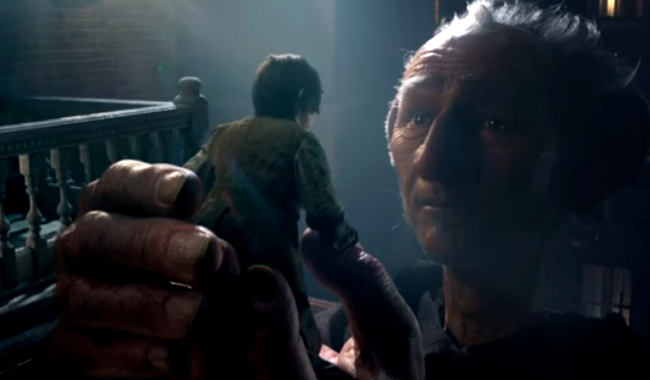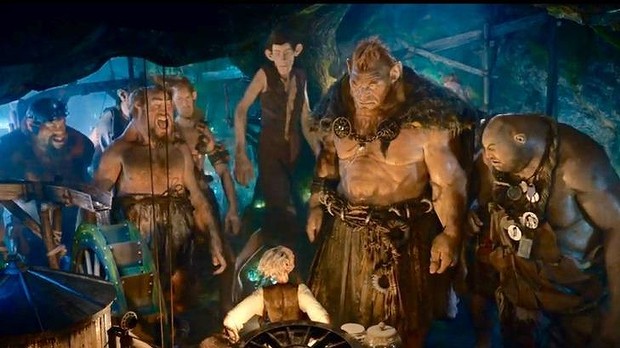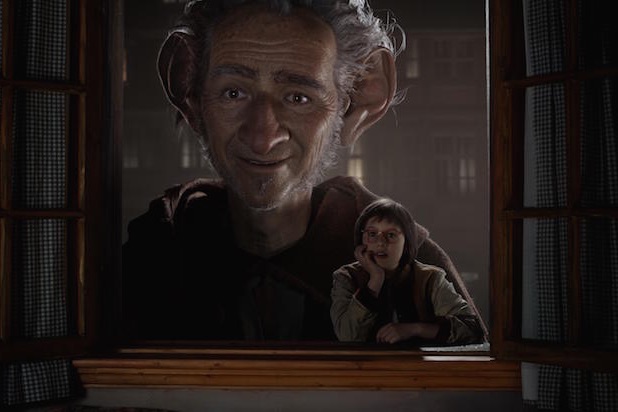
The BFG mostly adheres to a “keep it simple, stupid” philosophy. Through Melissa Mathison’s final credit and the production and direction of Steven Spielberg, Disney’s big screen adaption of Roald Dahl’s early 1980s novel is a slow moving but generally well crafted and good nature fairy tale that follows the beat of the original story rather closely. It doesn’t have the emotional oomph of other Spielberg epics like E. T or Schindler’s List (his magnum opus, in my opinion), but I can see families getting into it if they can withstand the lengthy running time.
My theater had a considerable number of parents with their kids, and I and the rest of the adults were laughing much harder than the younger viewers, who I noticed were rather quiet. Gorgeous imagery abounds, especially in the scenes where we see the title character’s collection of bottled dreams. I was generally entertained throughout, but Spielberg uses a lot of long panning shots designed for the viewer to just sit back and take in. Unlike Tim Burton’s take on Dahl’s “Charlie and the Chocolate Factory, there’s barely anything added to the main plot, so I can see these scenes feeling like extra padding for some.

Mark Rylance as the affable 25-foot tall titan is probably the strongest aspect of the movie. Proving his Oscar-winning turn in Bridge of Spies was no fluke, he gives the BFG a nice mix of whimsy and an inner melancholy. After snatching plucky girl Sophie (a very good Ruby Barnhill) from her orphanage in the middle of the night after she spots him “dream blowing” joyful visions to random children in London, he’s caught between his guilt and his fears Sophie will spread the word about his beloved Giant Country, potentially putting it and the human world in danger.
A gang of 50-foot giants led by the swaggering bully Fleshlumpeater, voiced by Jermaine Clement with a theatrical sense of menace, gives the BFG good cause to worry. Refusing to join them in their routine of kidnapping and eating humans (referred by the giant population as “beans”), he adheres to a diet of the Snozzcumber fruit and a fizzy drink called Frobscottle, which is the basis for some well-timed flatulence humor.

But BFG balances its lowbrow appeal with a more sophisticated arc, that being Big Friendly’s lack of self-esteem as he’s constantly bullied by the larger behemoths. While he acts as the friend she’s long been looking for, Sophie gradually helps him rebuild his confidence and convinces him to reach out to the humans for help in stopping the meaner monsters. As a fictionalized Queen Elizabeth II, Angela Thorne has good presence when she rallies the forces of the Crown and introduces BFG to human cuisine and customs, leading to one of the film’s biggest laughs when she and her entourage sample some Frobscottle. Rylance’s endearingness really makes these scenes work, with a combination of childlike energy and wonder as he tries to make polite.

This is in contrast to many scenes with BFG and Sophie in Giant Country, where he comes off more like the wizened old soul he is as he guides an awestruck Sophie through a vast dream pool. Like Big himself and the rest of the giants, the CGI here is top notch, and it leads to one of the film’s few truly ominous moments when she discovers the red glowing nightmare sprites. There aren’t enough urgent moments like that over the course of the movie, and overall I think that holds BFG back from being as memorable as it could be. But what’s left is an easy going and pleasant kid’s film that doesn’t insult anyone’s intelligence and two good performances from its leads, so that’s enough for a mild recommendation.
